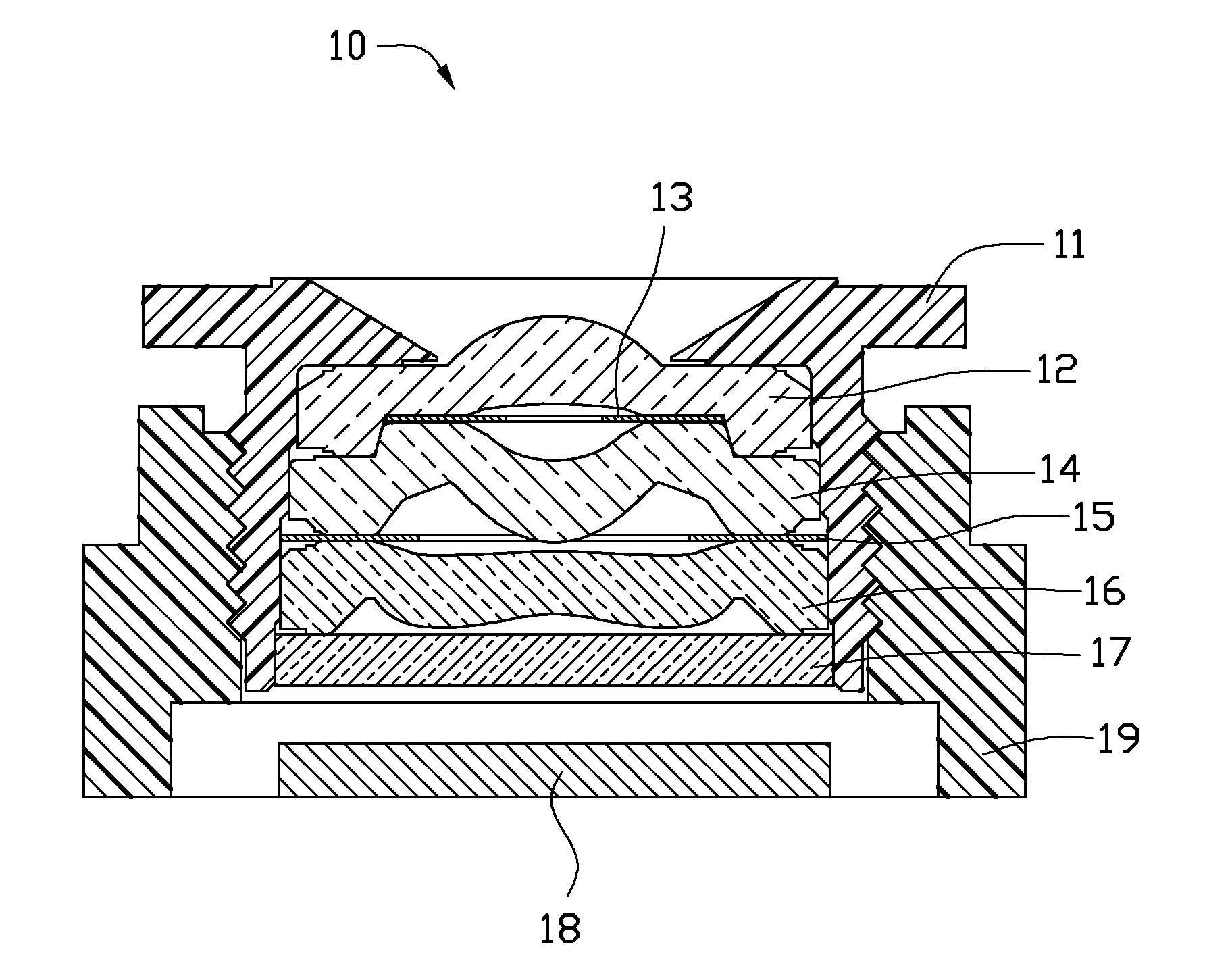Lens module
a technology of lens module and lens body, applied in the field of lens module, can solve the problems of relative uniformity (ru) in the following optical quality tes
- Summary
- Abstract
- Description
- Claims
- Application Information
AI Technical Summary
Benefits of technology
Problems solved by technology
Method used
Image
Examples
Embodiment Construction
[0010]FIG. 2, is an embodiment of a lens module 10 including a barrel 11, a first lens 12, a first spacer ring 13, a second lens 14, a second spacer ring 15, a third lens 16, an infrared cut-off filter 17, an image sensor 18, and a lens base 19. The barrel 11 is adjustably assembled to the lens base 19 via screw thread engagement. In the illustrated embodiment, one end of the barrel 11 is received into and rotatably engaged with a top end of the lens base 19, such that, the barrel 11 is rotatable relative to the lens base 19 and is capable of being axially adjusted relative to the lens base 19, thereby changing a length of the whole lens module 10.
[0011]The first lens 12, the first spacer ring 13, the second lens 14, the second spacer ring 15, the third lens 16 and the infrared cut-off filter 17 are coaxially assembled within the barrel 11, along an axial direction of the barrel 11 toward the lens base 19 in that order. In this embodiment, the first spacer ring 13 functions as an ap...
PUM
 Login to View More
Login to View More Abstract
Description
Claims
Application Information
 Login to View More
Login to View More - R&D
- Intellectual Property
- Life Sciences
- Materials
- Tech Scout
- Unparalleled Data Quality
- Higher Quality Content
- 60% Fewer Hallucinations
Browse by: Latest US Patents, China's latest patents, Technical Efficacy Thesaurus, Application Domain, Technology Topic, Popular Technical Reports.
© 2025 PatSnap. All rights reserved.Legal|Privacy policy|Modern Slavery Act Transparency Statement|Sitemap|About US| Contact US: help@patsnap.com



